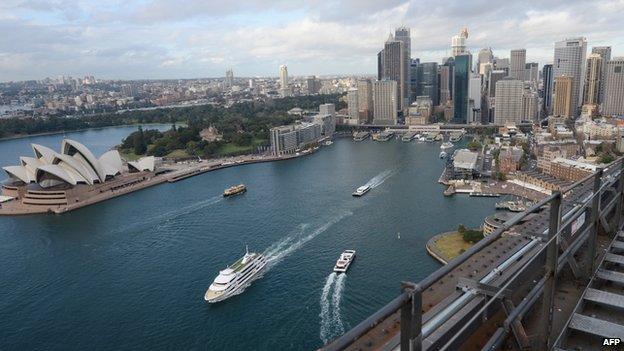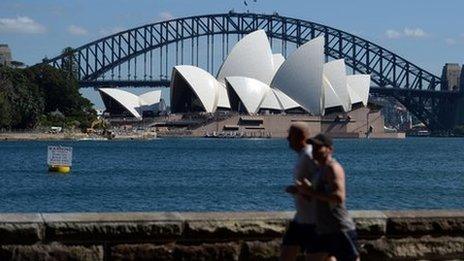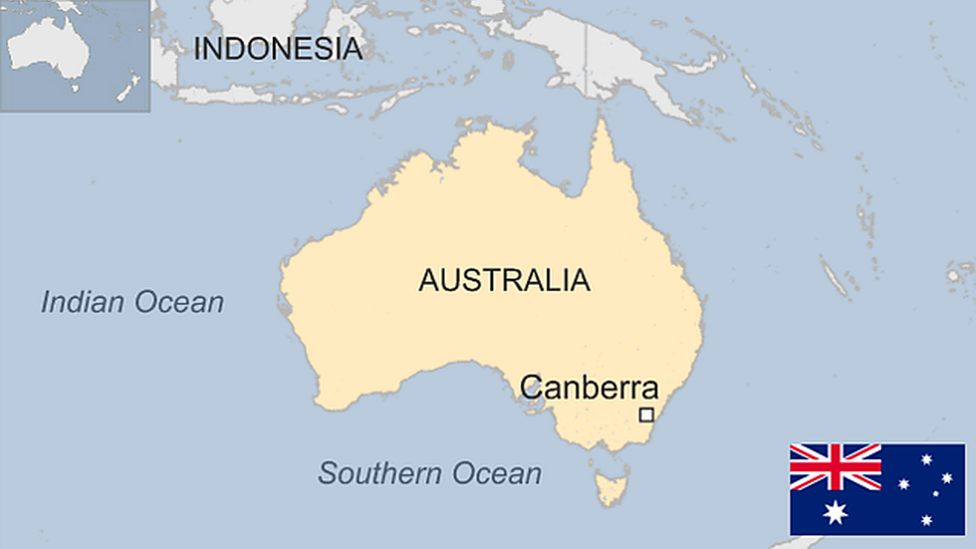Australia cuts interest rates to record low
- Published

Australia's central bank has cut interest rates for the first time since 2013
The Reserve Bank of Australia (RBA) has cut its key interest rate by 25 basis points to an all-time low of 2.25%.
The cut was the first from the central bank in 18 months and was widely expected by financial markets.
In reaction to the move, the benchmark S&P/ASX 200 hit a seven-year high, up 1.3%, while the Australian dollar slumped to a six-year low of $0.7650.
The RBA is the latest central bank to loosen monetary policy to boost growth amid falling oil and commodity prices.
It follows China, Canada, Singapore, Korea and India that have all cut interest rates in recent months.
Slowing economy
Australia is dealing with an economic slowdown, largely due to a drop off in mining investment, which had been a driver of the resource-rich economy.
"The available information suggests that growth is continuing at a below-trend pace, with domestic demand growth overall quite weak. As a result, the unemployment rate has gradually moved higher over the past year," RBA Governor Glenn Stevens said in a statement, external on Tuesday.
In December, Australia's economic growth for the third quarter came in well below expectations, while its unemployment rate hit a 12-year high of 6.3% in November.

Analysis: Phil Mercer, BBC News, Sydney
After holding its fire for almost a year-and-a-half, the central bank has pulled the trigger on lower interest rates because of worries about the economy, both at home and abroad.
An unprecedented cash rate of 2.25% is aimed at reigniting domestic confidence and performance by encouraging businesses and households to spend and borrow more. As profits and investment in the mining sector decline, growth here has faltered, and making money cheaper is the main weapon in the Reserve Bank's armoury.
Some economists had, though, argued that a falling Australian dollar and lower oil prices were already doing the work of a rate cut by boosting GDP and reducing household fuel bills. There is a concern, too, that historically low interest rates may fuel an already-upbeat housing market, which has risen by about 20% nationally since the rate-reduction cycle started in late 2011.
Depending on what lenders do, mortgage holders should benefit by seeing an average home loan fall by around A$56 ($43; £28) a month. The big question now is does the Reserve Bank have more rate cuts in its sights?

Katrina Ell, an economist at Moody's Analytics, said Australia's low inflation environment, coupled with the global wave of policy easing also drove the cut.
On Monday, a private survey showed that consumer price inflation rose just 0.1% in January from December, while the annual pace of 1.5% was the lowest reading since July 2012.
- Published3 December 2014

- Published14 April 2023

- Published6 February 2015
